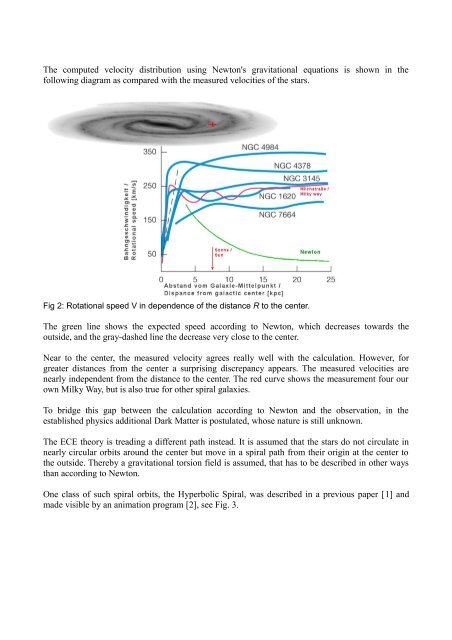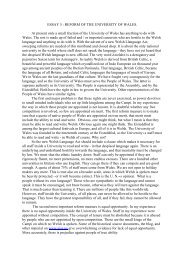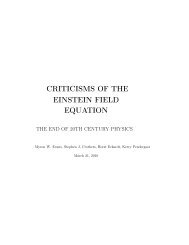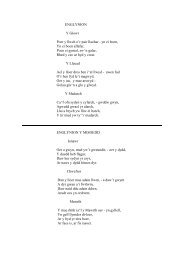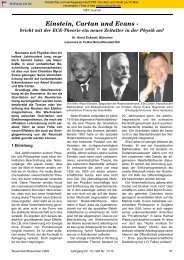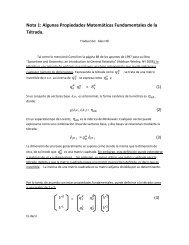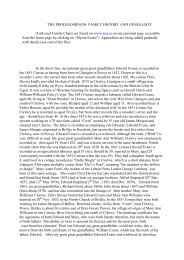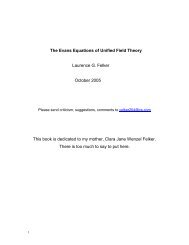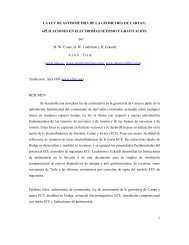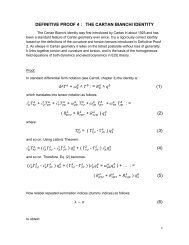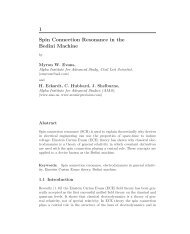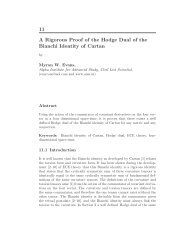Determination of spiral orbits with constant tangential velocity - English
Determination of spiral orbits with constant tangential velocity - English
Determination of spiral orbits with constant tangential velocity - English
Create successful ePaper yourself
Turn your PDF publications into a flip-book with our unique Google optimized e-Paper software.
The computed <strong>velocity</strong> distribution using Newton's gravitational equations is shown in the<br />
following diagram as compared <strong>with</strong> the measured velocities <strong>of</strong> the stars.<br />
Fig 2: Rotational speed V in dependence <strong>of</strong> the distance R to the center.<br />
The green line shows the expected speed according to Newton, which decreases towards the<br />
outside, and the gray-dashed line the decrease very close to the center.<br />
Near to the center, the measured <strong>velocity</strong> agrees really well <strong>with</strong> the calculation. However, for<br />
greater distances from the center a surprising discrepancy appears. The measured velocities are<br />
nearly independent from the distance to the center. The red curve shows the measurement four our<br />
own Milky Way, but is also true for other <strong>spiral</strong> galaxies.<br />
To bridge this gap between the calculation according to Newton and the observation, in the<br />
established physics additional Dark Matter is postulated, whose nature is still unknown.<br />
The ECE theory is treading a different path instead. It is assumed that the stars do not circulate in<br />
nearly circular <strong>orbits</strong> around the center but move in a <strong>spiral</strong> path from their origin at the center to<br />
the outside. Thereby a gravitational torsion field is assumed, that has to be described in other ways<br />
than according to Newton.<br />
One class <strong>of</strong> such <strong>spiral</strong> <strong>orbits</strong>, the Hyperbolic Spiral, was described in a previous paper [1] and<br />
made visible by an animation program [2], see Fig. 3.


